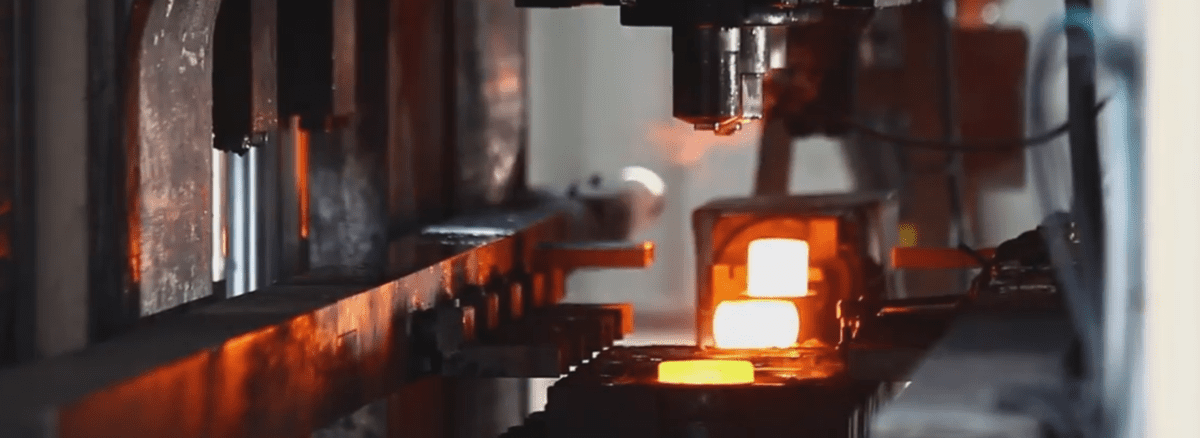There are two methods for induction surface heating of forgings: continuous moving and stationary. In the continuous moving method, the sensor or forging is heated while it is moving, and then it is quenched while still in motion. In the stationary method, the forging is heated on the quenching surface within the induction coil, with no relative movement between the sensor and the forging. After reaching the desired temperature, it is either cooled by liquid spray or immersed in a cooling medium for quenching.
The stationary heating method is limited by equipment power, and sometimes, to heat forgings beyond the power limits and achieve a certain depth of hardening layer, multiple repeated heating cycles or preheating to 600°C may be required.


Continuous moving heating is more common for induction heating of forgings, with high-frequency heating typically involving a fixed sensor and a moving forging. In the case of medium-frequency and low-frequency heating, the sensor often moves, and the forging may rotate if necessary. The sensor is placed on the moving platform of the quenching machine.
The quenching temperature depends on the selected power and the moving speed. Due to the smaller working area of continuous moving heating, it has a broader application range for forgings. Therefore, high-power medium and low-frequency induction heating methods are commonly used in forging induction heating both domestically and internationally.
For carburizing forgings, the goal is to achieve the required depth of the carburized layer, satisfactory surface carbon concentration, and a good gradient of carbon concentration in the carburized layer. During the carburizing process, once the process parameters are determined, the key controllable factors are the carbon potential, time, and temperature inside the furnace.
Temperature control is crucial for heat treatment, and it is generally achieved through contact switch-based temperature control, with a control accuracy of around 10°C. However, nowadays, both domestically and internationally, thyristor-controlled temperature control systems are widely used. These systems can proportionally adjust input power to control furnace temperature with about 1°C accuracy.
The uniformity of furnace temperature is crucial for ensuring the quality of carburizing in large forgings. Large temperature differences within the furnace, both vertically and horizontally, can affect carbon absorption and diffusion during carburization, leading to uneven surface carbon concentration and carburized layer depth.
Ensuring the uniformity of furnace temperature relies on the quality and technical level of furnace design and manufacturing. It also depends on the ability of the temperature control equipment to maximize temperature control accuracy.
In the carburizing process, the furnace’s carbon potential is controlled through the quantity of carburizing agent drips, the ratio of various carburizing agents and diluents, and the furnace’s carbon potential. For large forgings with increasing demands on fatigue and overall performance, it’s important to quantitatively assess the furnace’s carbon potential and rapidly calculate the relationship between carbon potential and the amount of dripped carburizing agent. This allows for the control and adjustment of the amount of carburizing agent and diluent dripped. Additionally, based on the carbon transfer coefficient and diffusion coefficient, one can quickly calculate the carbon concentration gradient and carburized layer depth for each layer.


